In guarding their fortune men are often closefisted, yet, when it comes to the matter of wasting time, in the case of the one thing in which it is right to be miserly, they show themselves most prodigal.
Seneca
Category: Uncategorized
Mission wall
I’ve been thinking about how to decorate our little apartment, and my first experiment in printing a poster-size photo and framing it failed pretty spectacularly. The print was far more expensive than it should’ve been, and the frame I bought at a thrift store (much cheaper than a custom-cut frame from Michael’s or wherever) ended up breaking. In the end, we have a wrinkled, sad-looking little print hanging on a dark wall.
I realized that standard 4×6″ photo prints at Walmart are really cheap, and can cover a lot of wall space. Instead of large prints and frames, why not have a hundred– or hundreds– of little prints stuck to the wall?
Bam.
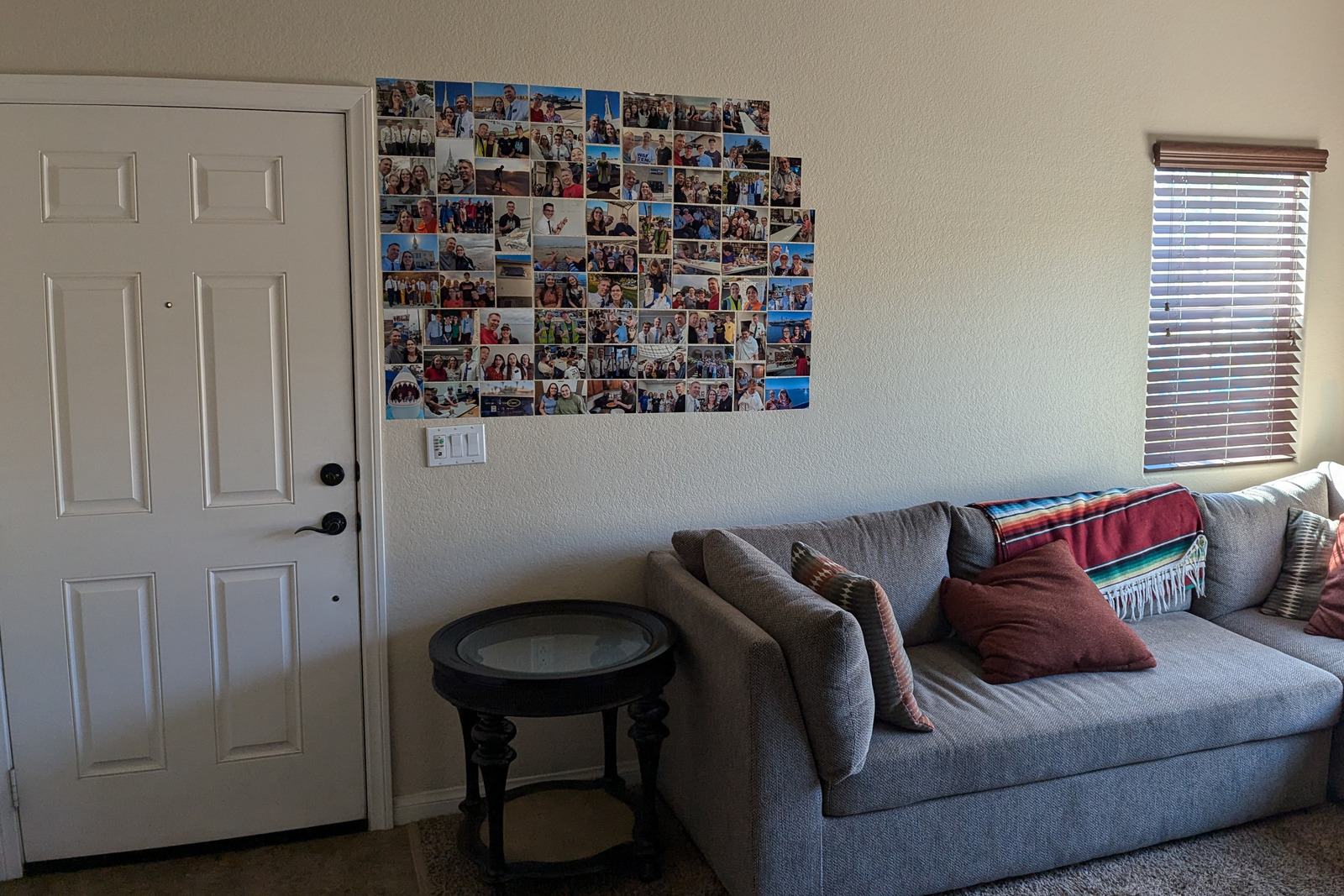
There are about seventy photos from the first quarter of our missionary adventures. Pepper pointed out that I’ve already used about half of the wall space in the living room, but I figure I’ll just wrap around to the other walls later.
For now, it’s fun to see reminders of the awesome people we’ve met and things we’ve done on our mission as we’re heading out the door or sitting on the couch. More to come!
Burger Town
Back in Bigfork, there’s a legendary restaurant called Burger Town. If the sign is to be believed, it’s been around for almost fifty years, and is a fixture in the town. Everyone’s been there. And although the burgers aren’t stellar, it’s a really fun location and a great place to enjoy a summer evening (they’re only open in the summer months).
Yesterday we found its twin in San Diego!
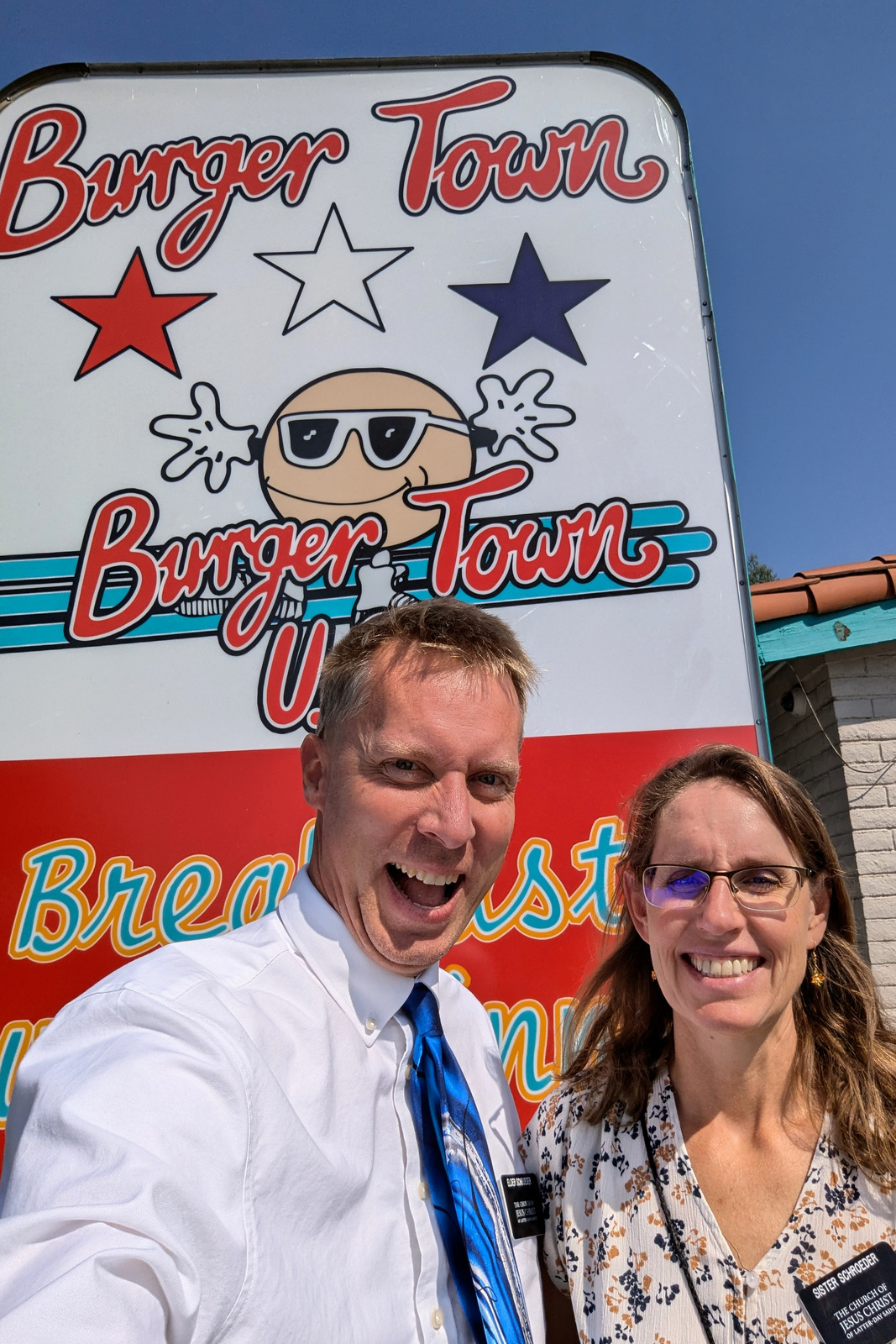
There’s no relation between the two (other than the name) but it was a nice reminder of home. And the burgers were pretty good too.
Missionary moms
When our kids were serving missions, we loved getting unexpected texts from people who’d met them and shared a photo with us. It was good to know they were working hard and meeting good people. We were always grateful to those strangers who took a moment to send us a text about our kids.
So, as we meet and work with the amazing missionaries out here, I’ve been making a habit of taking pictures with them and texting their moms. We added a few more recently:
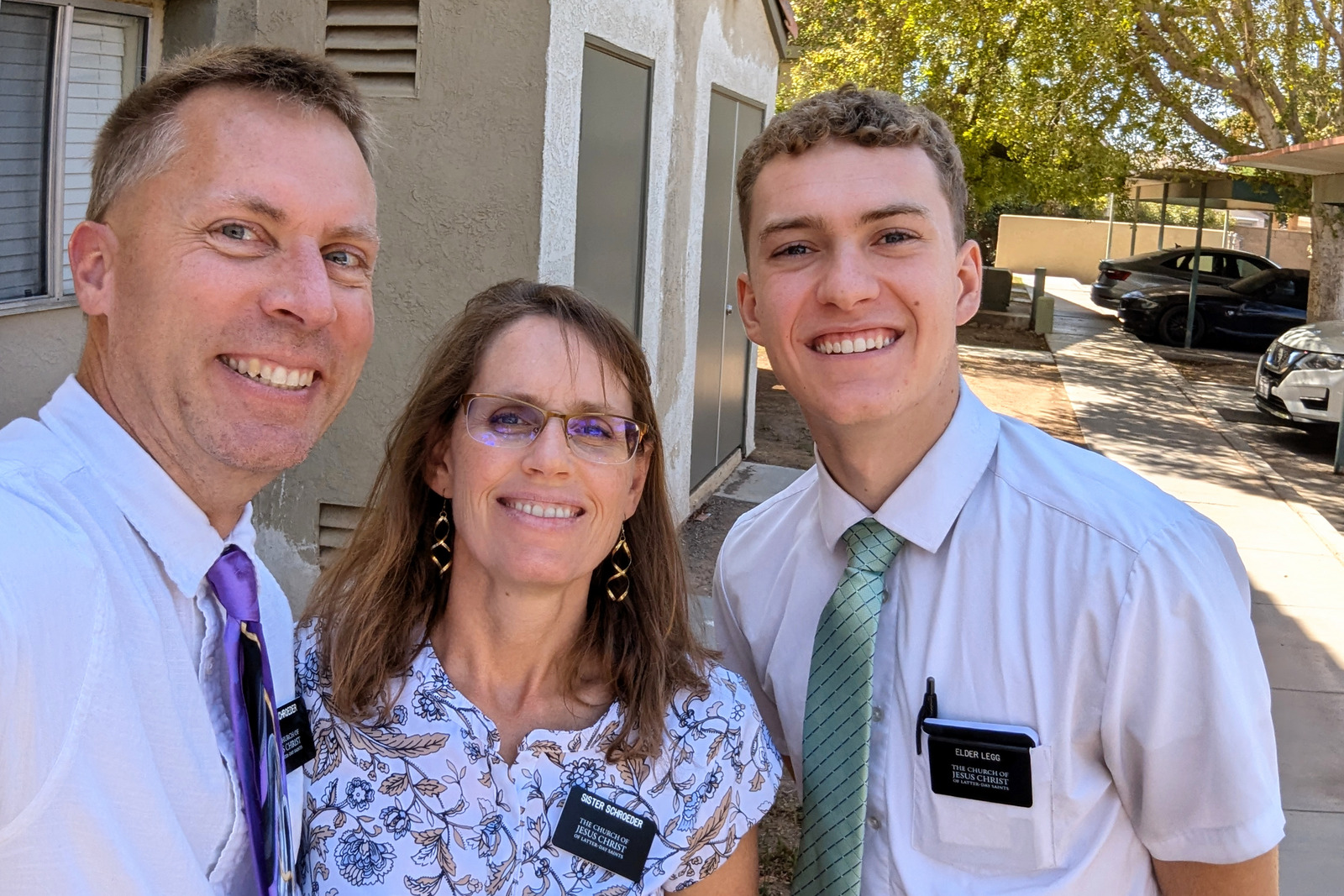
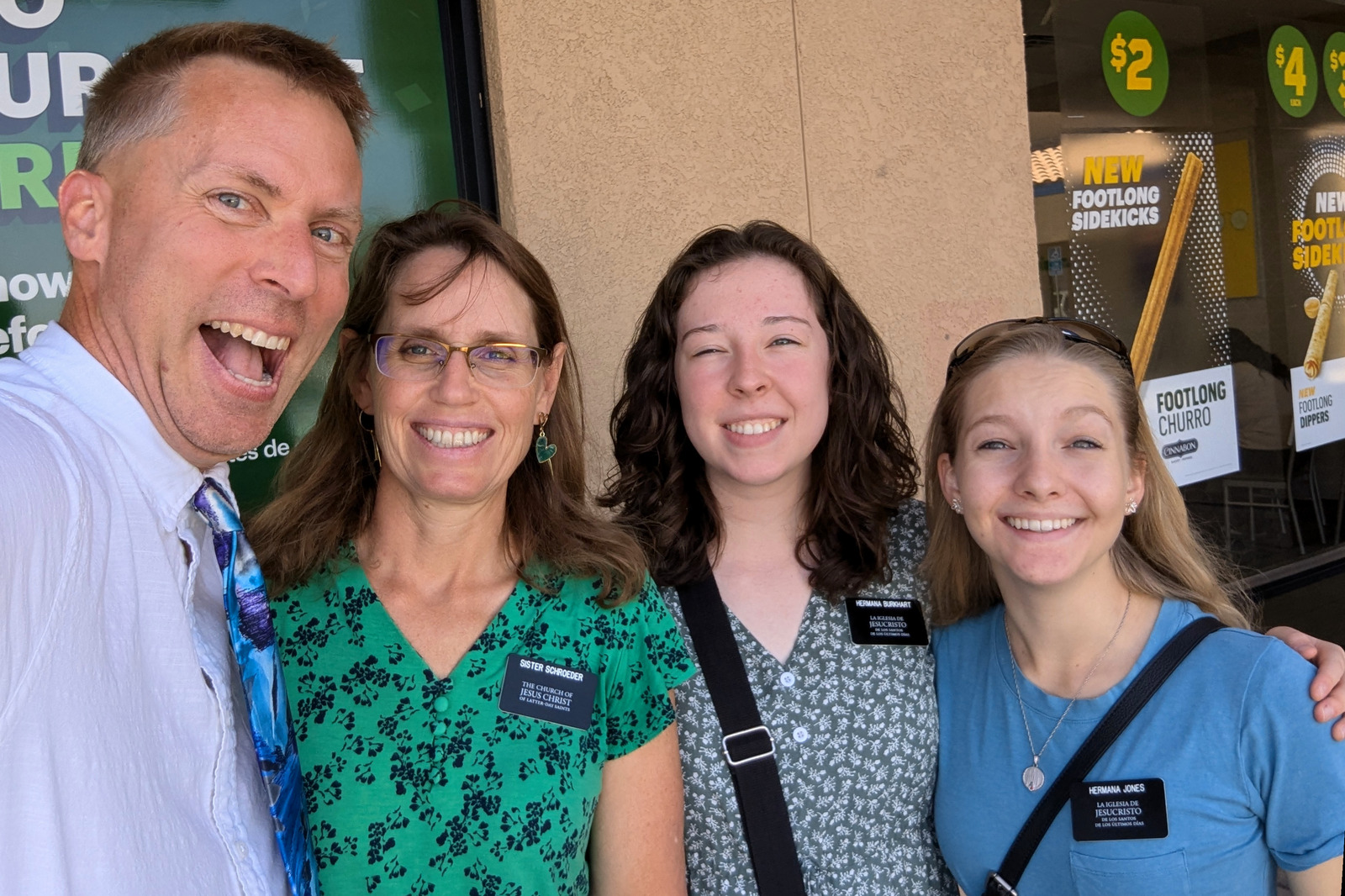
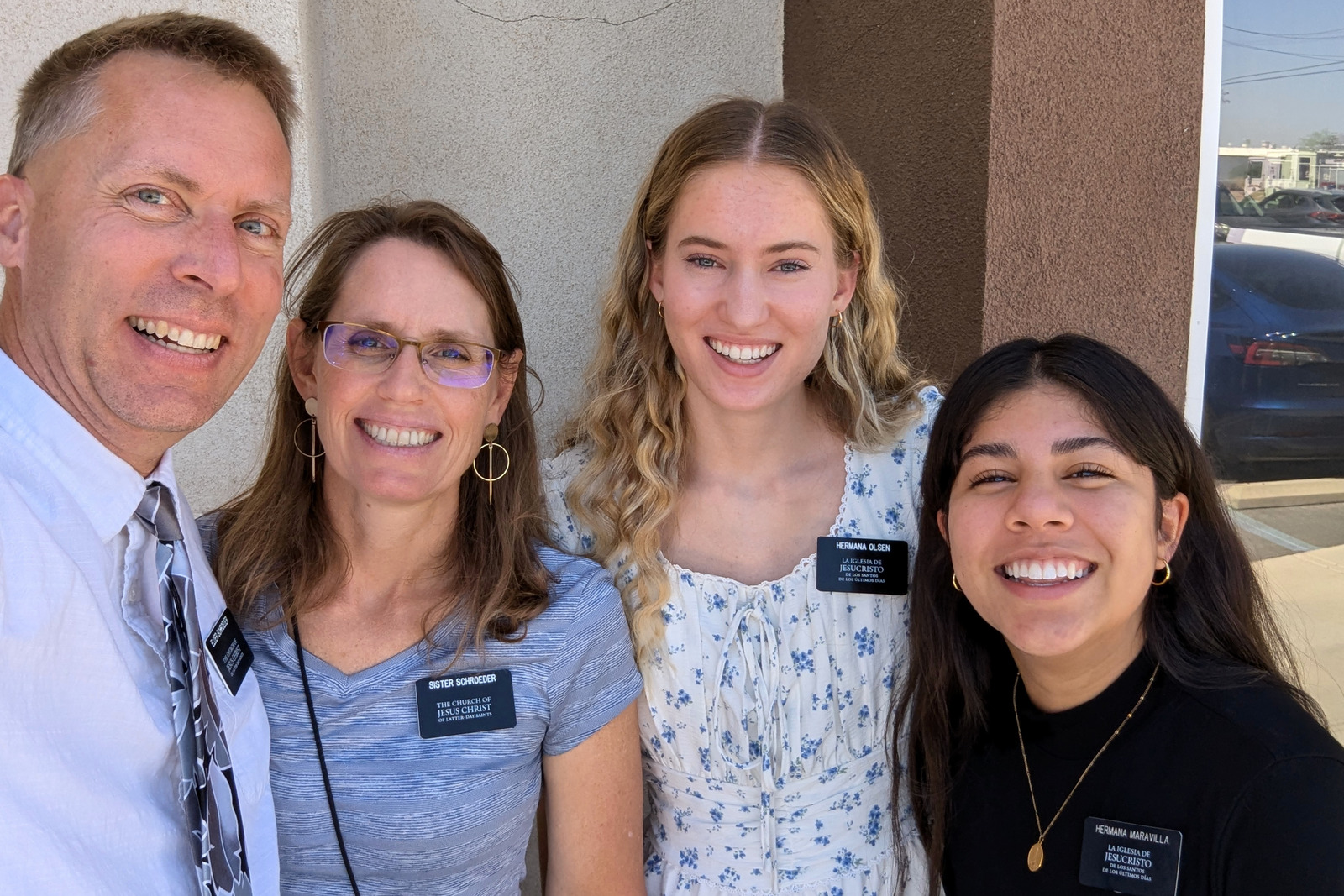
It’s fun to get the responses from moms who are thrilled to hear about their kids. My goal is to text all the moms of the missionaries we serve with. 100% so far…
Priorities
Don’t say “I didn’t have time for that.” Instead, say “That wasn’t a priority for me.”
Jeff Burt
We always make time to do the things that are priorities for us. If we can’t make the time, then it must not be important enough.
Reframing a task like that can help us reflect on how important it really is. And if, when we claim it wasn’t a priority, it sits well with us, then we can be satisfied with not doing that thing.
I could get used to this
Living in Colorado for decades fed my soul. I love the mountains.
Then, moving to Montana fed my soul in a different way. I found that I also love lakes. (And mountains!)
Now, living in California is feeding my soul as we head out to San Diego at times. I’m finding that I love the ocean.
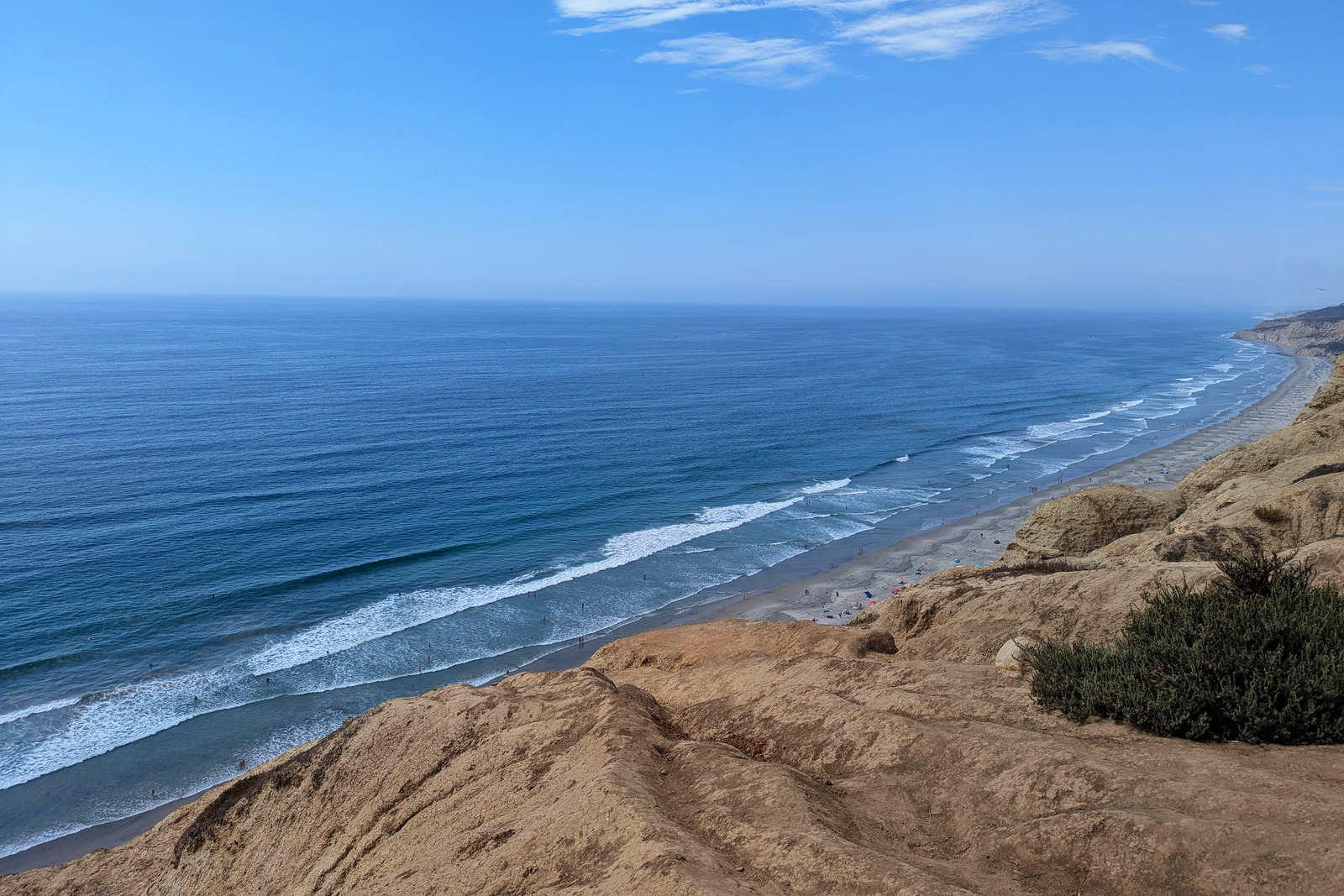
Missionary baseball
Our mission leader, President Merritt, enjoys baseball.
As a reward for all the missionaries’ hard work, and as a way to get everyone together for a fun evening, he bought tickets for the Padres game. All two hundred missionaries– young and old– were given seats in the right field upper deck. Since we were all wearing our proselyting clothes (“pross”), it was pretty cool to see an entire section filled with white shirts and ties, skirts and dresses.
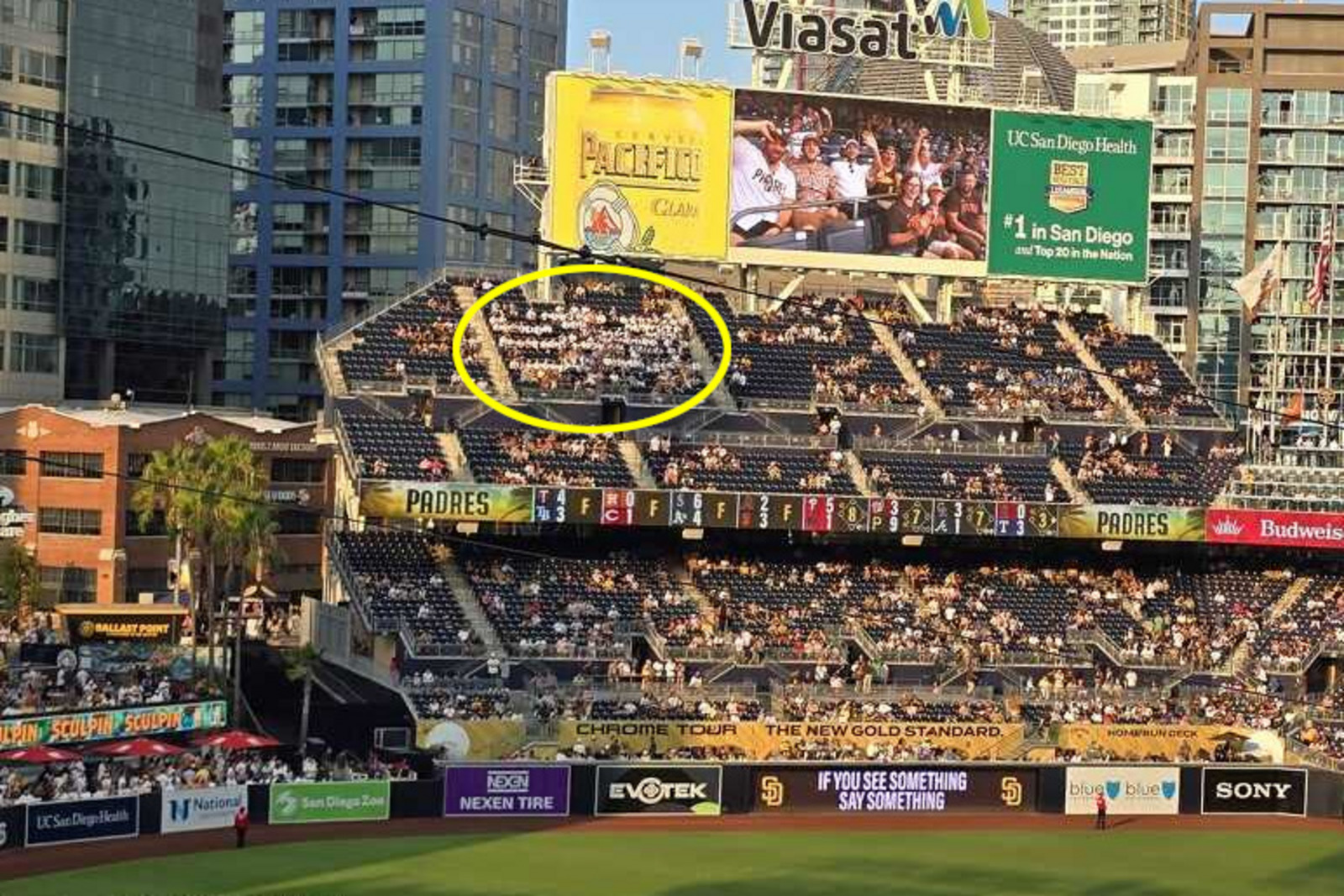
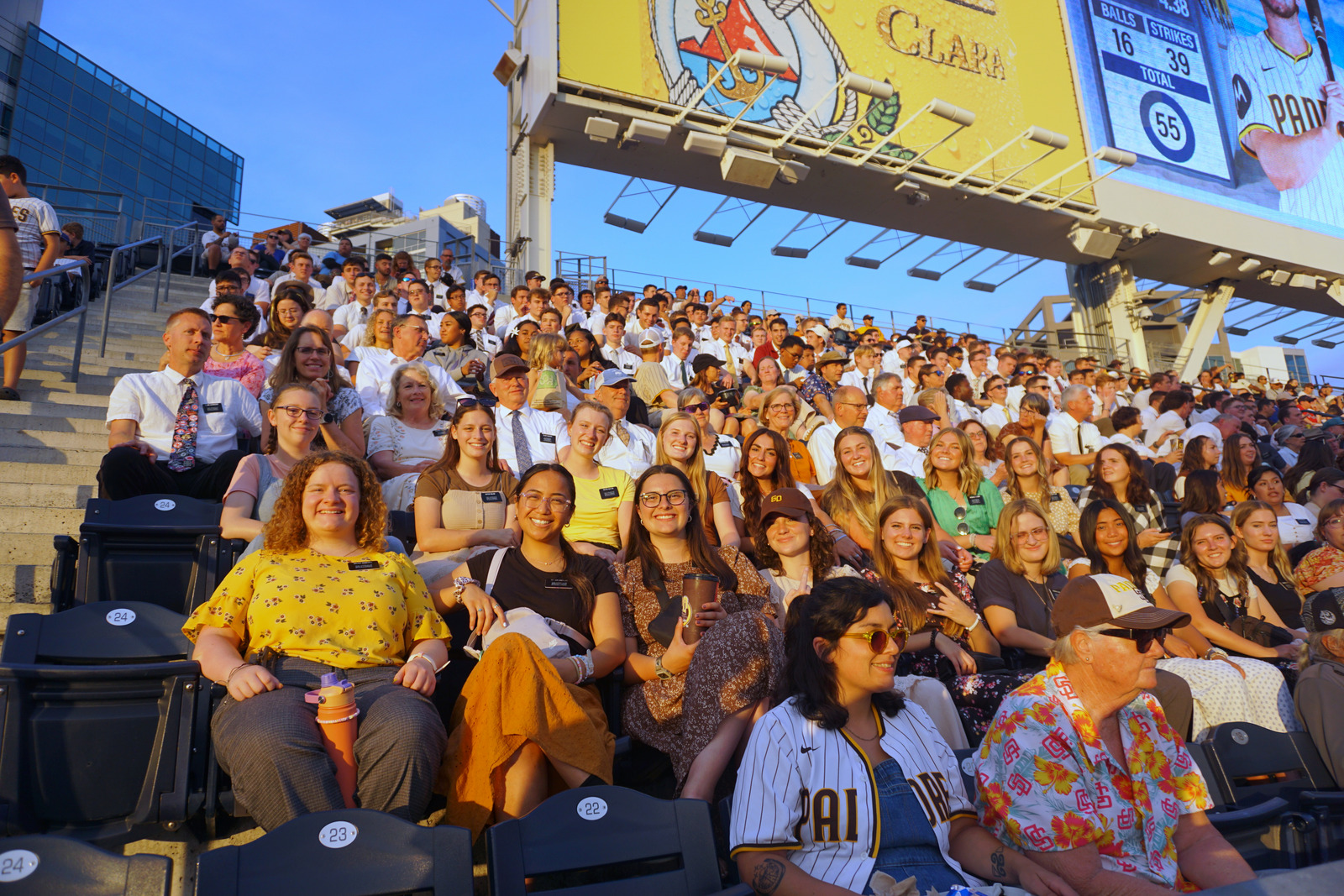
Many of the women had never been to a baseball game before; in fact, the two sitting behind us didn’t even know the rules. It’s probably safe to say the men were much more excited. Here’s President Merritt surrounded by a bunch of pumped-up missionaries:
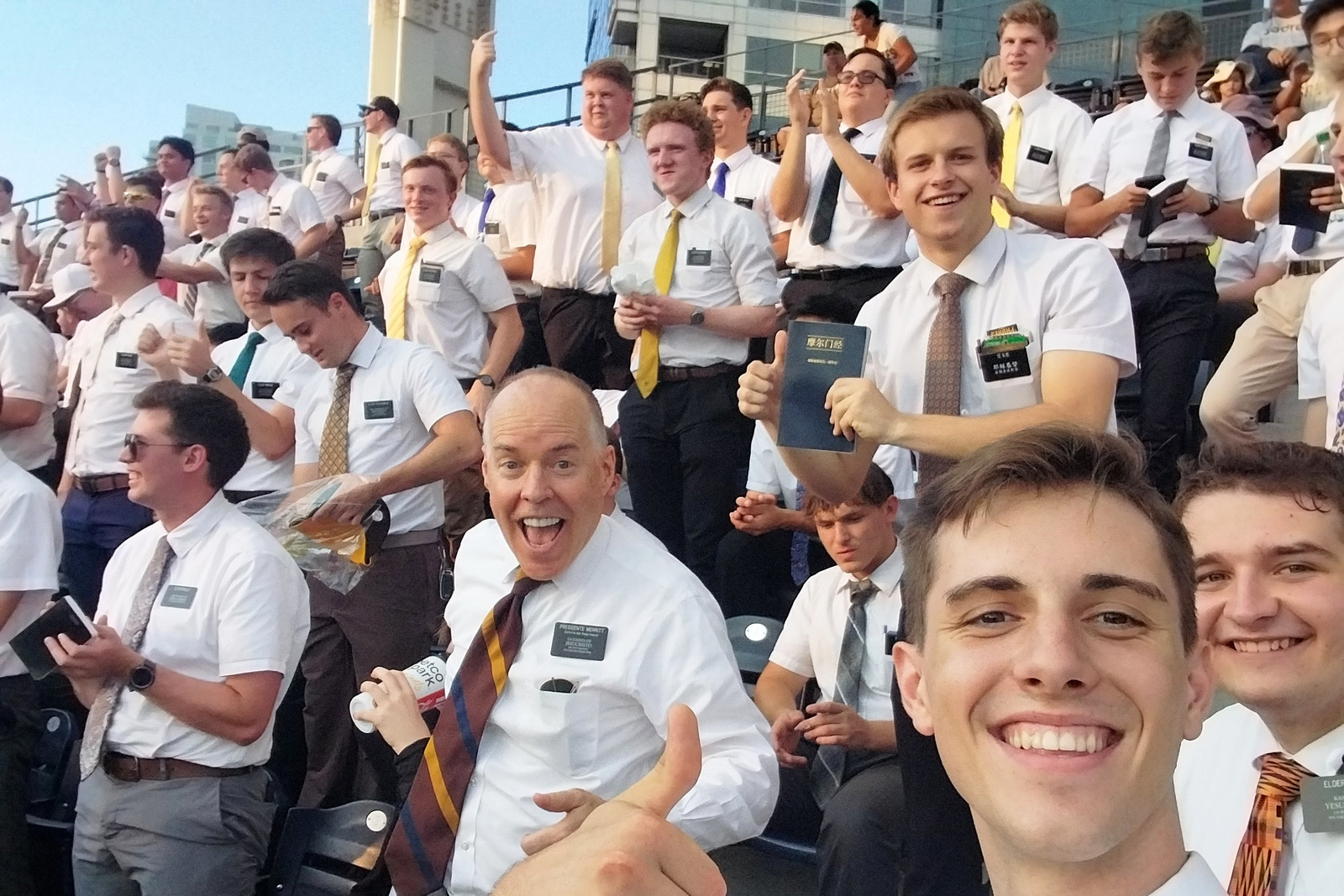
Here we are, a few rows back with our friends the Knudsens:
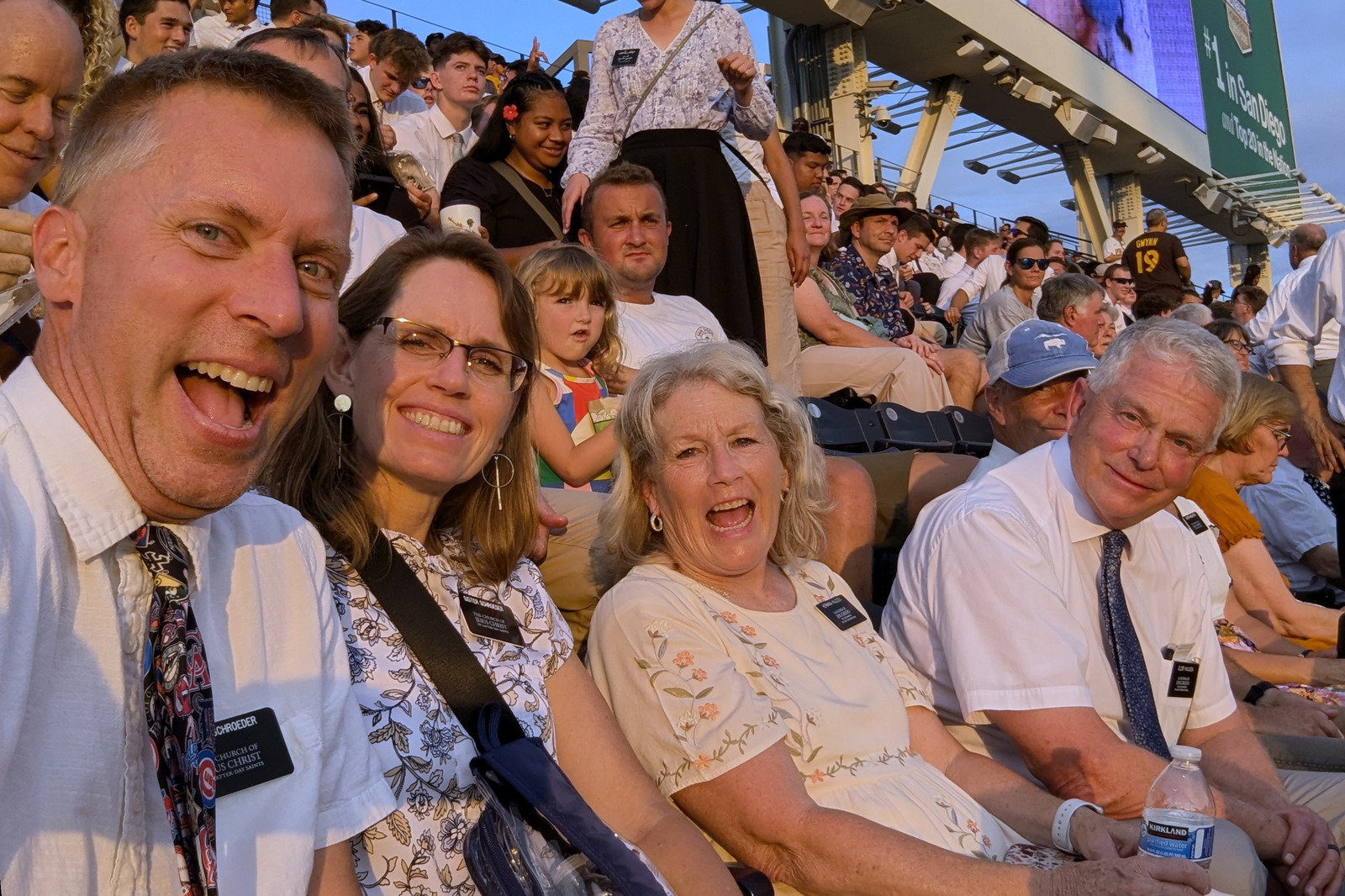
Margie decided she should open her mouth like me in photos, because it always looks like I’m having so much fun. It seems like maybe she needs more practice, though.
It was a ton of fun. Our section went crazy when several of the missionaries were featured on the big screen. Notice President Merritt in the lower right:
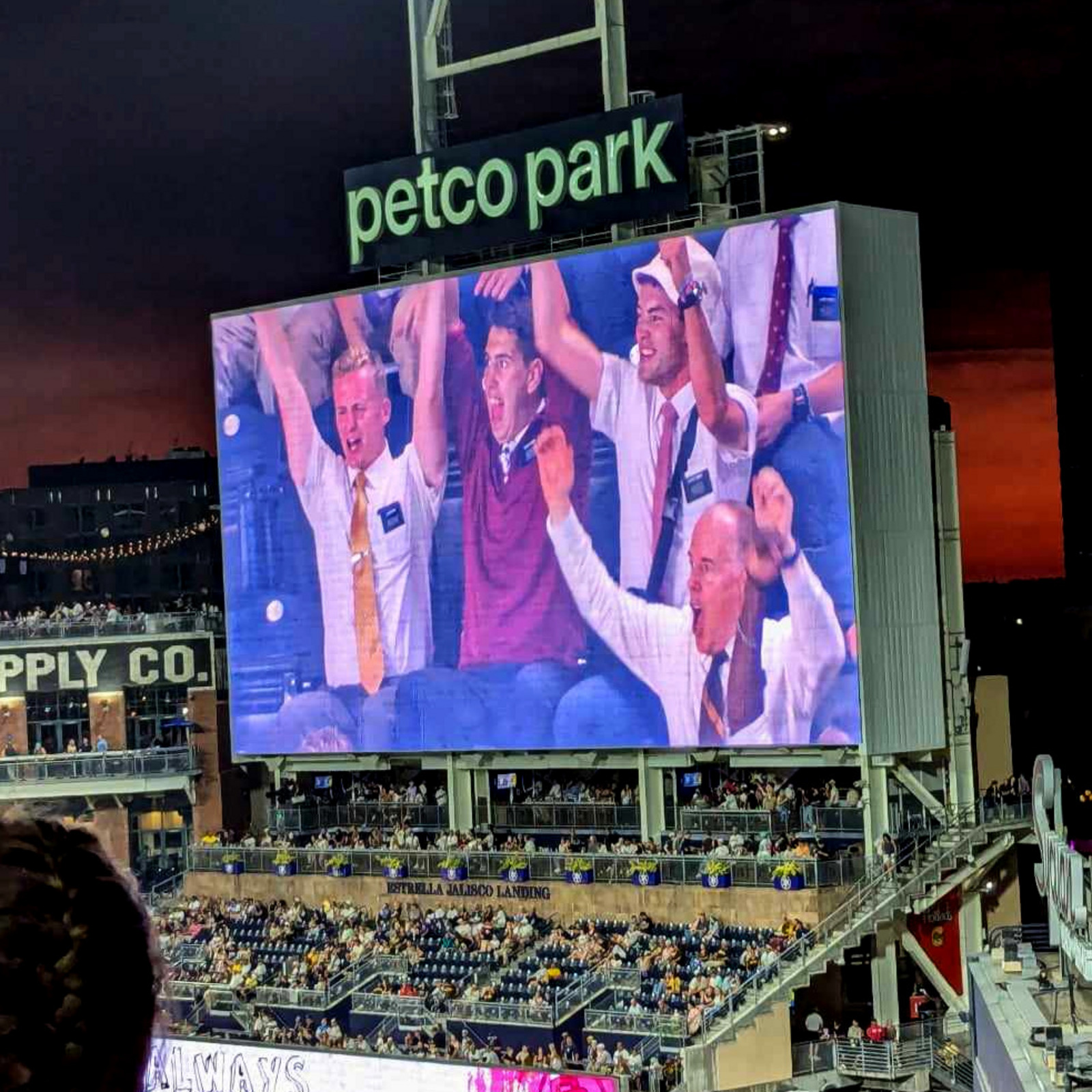
The Padres were playing the Tigers, and in the first couple of innings the home team went up 3-0. The middle of the game was a fairly mundane three-up-and-three-down slog, and then we hit the top of the ninth. Detroit, with two outs and still down by three, poked a single up the middle. The Padres brought in a relief pitcher– the third of the game, if I remember correctly– and judging by his stats, we figured the game was over. We prepared to leave.
He walked the first batter he faced.
Then he walked the bases full on the next batter. Unbelievable.
After a few pitches, it was a 3-2 count. Two outs. The very last pitch of the game. Or… was it?
Grand slam.
The Tigers’ batter smashed a home run to deep left field, clearing the bases and putting Detroit on top 4-3. The Padres had their final inning but all three batters came up and then sat down. Game over.
There was a lot of grousing about how the Padres had blown it, but since I didn’t really care who won or lost, I kept telling everyone, “That Tigers batter just had the night of his life. A two-out full-count grand slam to win the game? That’s the stuff Major League Baseball players dream of. His mom must be very proud.”
So yeah, that was cool. And it was super cool to hang out with such fine men and women, even if I had to be in a shirt and tie.
It doesn’t feel like September
For the last thirty years, when the calendar page flips to September, the weather starts to cool off and it feels like the glorious days of fall are just around the corner.
In El Centro, that doesn’t happen.
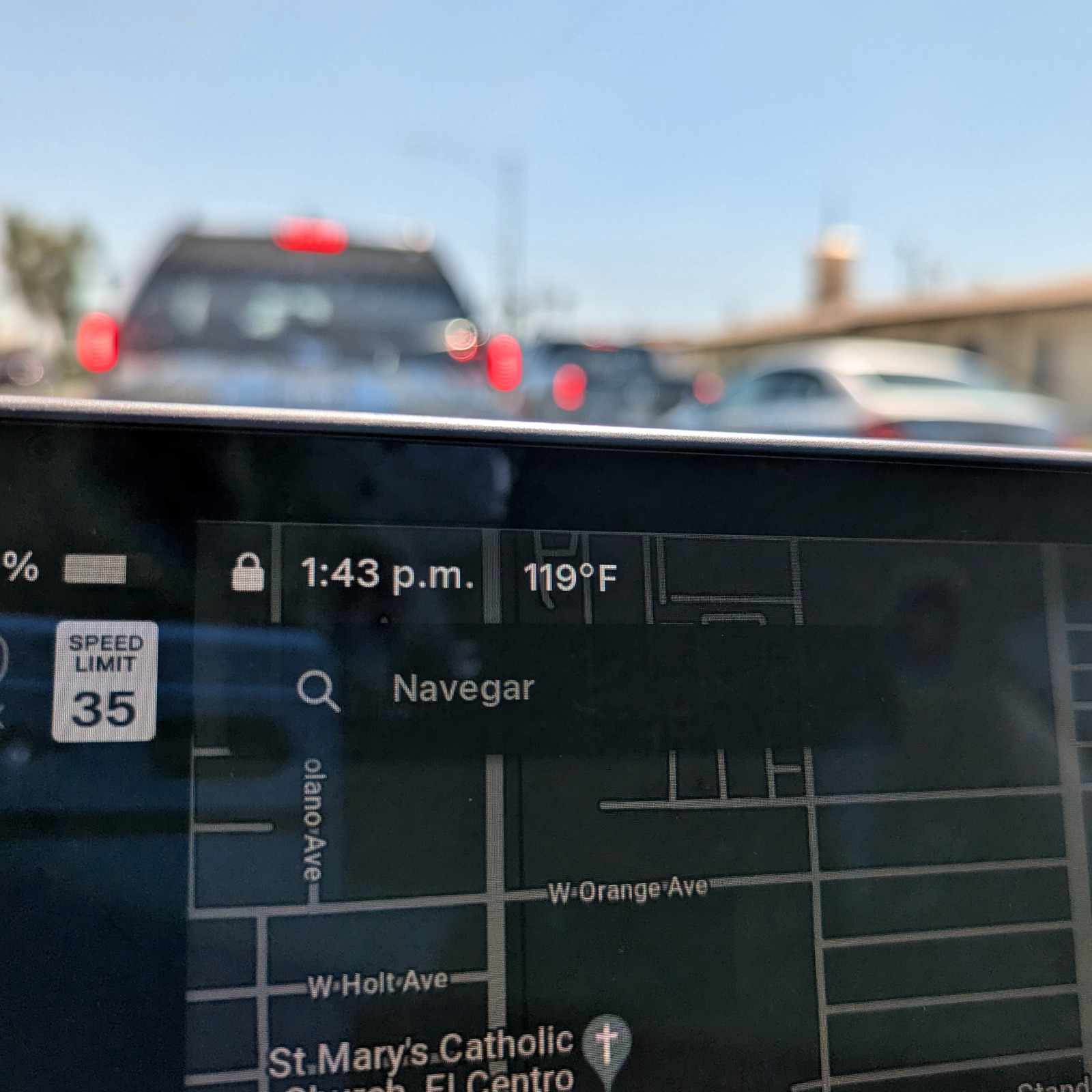
Today the mercury almost hit 120 degrees.
People say it’ll finally feel like fall sometime after Halloween. Halloween?!
Maestro
I got a new toy.
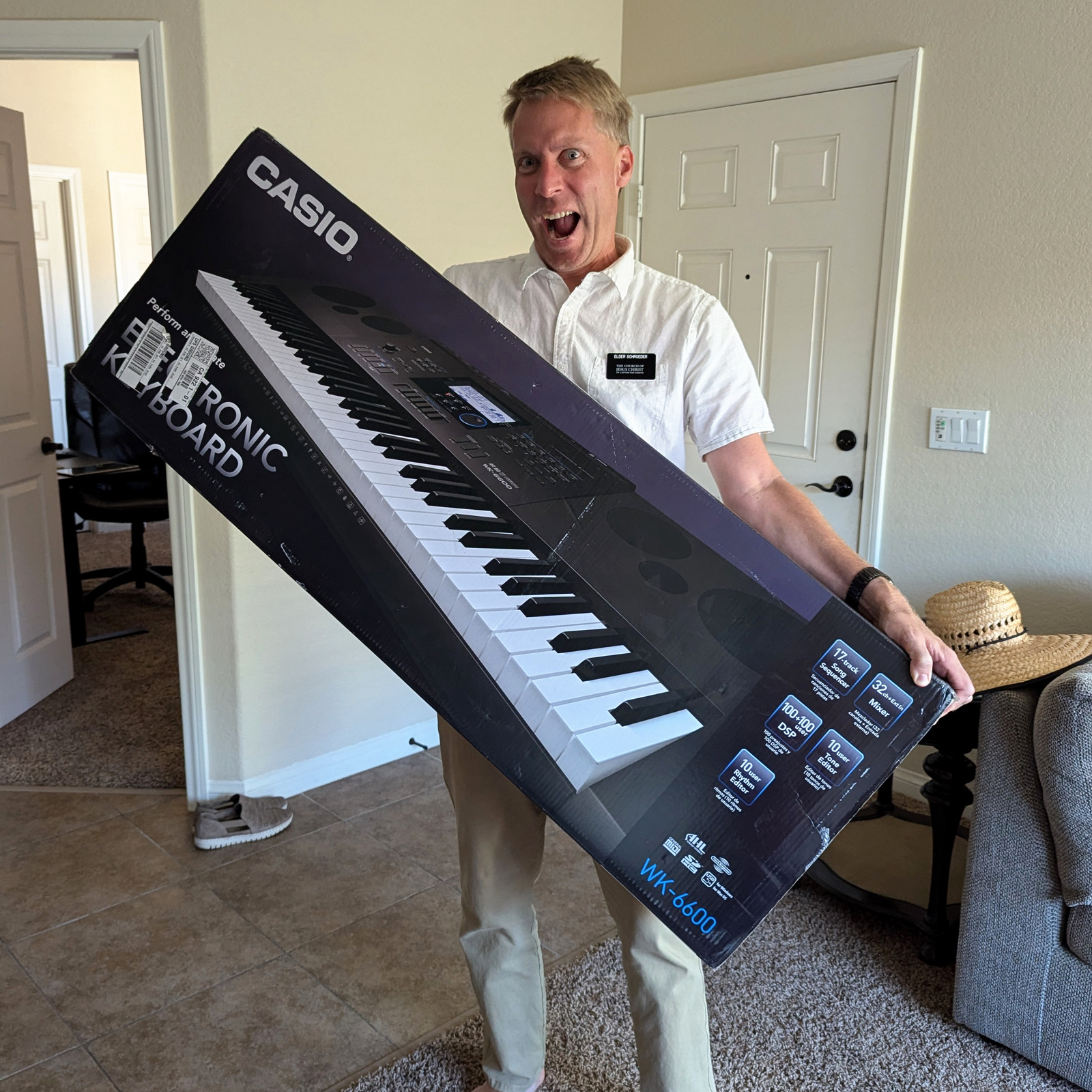
There are some days when we have a bit of downtime, and all of my hobbies are back in Montana. So I said to myself, “Self, maybe you should learn to be more musical.” Buying a piano didn’t seem like a great idea, but these days you can get a pretty good electronic keyboard without spending a ton of money. I shopped around and talked to a couple of friends who have nice keyboards (well beyond my abilities or budget), and decided on this Casio WK-6600.
It has hundreds of instruments (“voices” in the terminology of the trade) and reverb effects and drum solos and automatic this and that, but in the end I really only care about the piano mode. Perhaps someday I’ll get into music creation, instead of plinking around in piano mode. But for now, it’ll be fun to teach myself how to play. Again.
The barber shop redux
Elder Davis had heard of our in-house barber shop, and today he asked if he could get a haircut. We planned a time, fixed some dinner for them (pancakes and eggs, strangely enough), and then Pepper went to work.
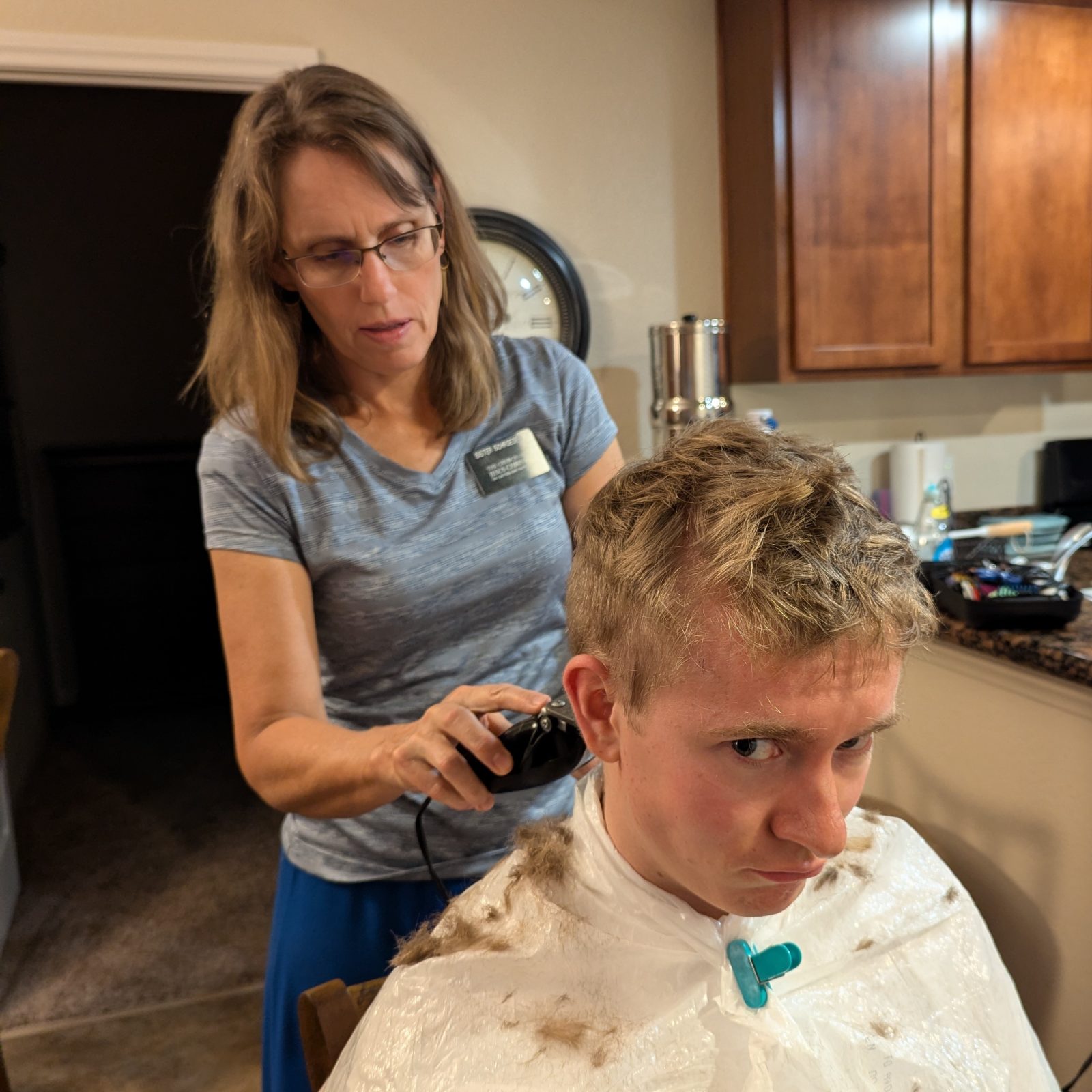
She still only has a single haircutting style, but the missionaries seem to care more about the price than the quality. Elder Davis was happy with his, and then Elder Steinhour asked for another trim. He’d received a cut about a week before, but felt like it should be even shorter.
He insisted that I give it a go, despite the fact that I’ve never really cut anyone’s hair before.

The whole time, he was directing me about what to do. “Put on the quarter-inch guard. Now adjust the lever. Now shave up from the bottom, blending as you go.” In the end it turned out just fine, and our two customers went home looking sharp.
